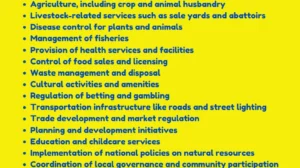Russia, spanning a vast 17,098,242 km2 (6,601,670 mi2), claims the title of the world’s largest country, encompassing both land and water.
Yet, when considering just its land area at 16,376,870 km2 (6,323,144 mi2), Russia retains its supremacy.
This vast expanse equates to a remarkable 11% of Earth’s total land area, which the CIA World Factbook pegs at 148,940,000 km2 (50,185,491 mi2).
Following Russia, the next five contenders in the global land area arena are Canada, the United States, China, Brazil, and Australia.

PHOTO | rapidleaks
Top 10 Largest Countries In The World
1. Russia
Total population: 144,995,000
Russia, the world’s largest country at 17,098,246 square kilometers, stretches from the northern hemisphere into parts of Europe and all of North Asia.
It spans 11 time zones and borders 14 nations. Surprisingly, Lake Baikal, while smaller than the Caspian Sea, holds a fifth of the world’s liquid freshwater supply due to its remarkable depth.
Russia boasts over 80 national parks and reserves, covering roughly one-fifth of the planet’s forests, which equals about 763.5 million hectares.
2. Canada
Total Population: 38 million
Canada, the world’s second-largest country, stretches over 9.984 million square kilometers.
It spans five time zones, shares a 7,885 km (4,900 miles) border with the United States, and boasts an impressive 243,042 km (151,019 miles) of coastline, the longest globally.
Up north, it reaches into the Arctic Circle, home to icy expanses, tundra, and diverse wildlife.
The nation consists of 10 provinces and three territories, each showcasing distinct climates and landscapes.
In the western half, the Rockies run along the border of British Columbia and Alberta, covering a span of 1,200 km until the Liard River Basin.
The prairies in Alberta, Saskatchewan, and Manitoba are marked by vast grasslands and plains.
Eastern Canada houses lively cities like Quebec and Toronto, rugged coastlines in Nova Scotia, and the densely populated region of Central Canada, comprising Ontario and Quebec.
The Atlantic region, explored by Europeans early on, consists of four provinces.
Lastly, Northern Canada, sparsely inhabited and encompassing Yukon, Northwest Territories, and Nunavut, features the Arctic Tundra and the striking Innuitian Mountains.
3. United States Of America
Total Population: 339,277,000
The continental U.S. spans 9.6 million square kilometers, including 48 states, Alaska, and Hawaii.
Inhabited for 12,000 years, discovered in the late 15th century.
The U.S. declared independence in 1776, solidified in the 1783 Treaty of Paris, expanding to the Mississippi River.
In 1803, the Louisiana Purchase significantly enlarged the country’s territory. The annexation of Texas in 1845 indirectly contributed to acquiring the land now known as California.
The concept of Manifest Destiny in the 19th century drove westward expansion, and the 1856 Guano Islands Act facilitated expansion beyond North America, eventually leading to Hawaii’s annexation in 1898.
The United States purchased Alaska from Russia in 1867.
From 1904 to 1979, the United States controlled the Panama Canal Zone.
The last contiguous state was admitted in 1912, and Hawaii became the fiftieth state in 1959.
4. China
Total Population: 1,413,659,000
China, the largest nation in Asia, shares borders with 14 countries, similar to Russia, but it operates within just one time zone and covers a total of 9,596,960 Km2
With a population larger than any other nation, it holds a crucial position in the global economy.
Its history spans thousands of years, characterized by different cultural periods and prominent figures like Mao.
The Zhou Dynasty laid the foundation for the first capitals, and later, the King of Qin united the land.
Over time, various dynasties expanded China’s territory through military conquest, migration, and trade.
For two millennia, scholars managed administrative affairs until the Republic of China was established in 1912.
In 1949, mainland China became the People’s Republic of China, while the Republic of China relocated to Taiwan.
Despite ongoing disputes, the United Nations has recognized the People’s Republic of China since 1971.
Finally, Hong Kong and Macau joined China in 1997 and 1999, following the transfer of sovereignty from the UK and Portugal.
5. Brazil
Total Population: 216,285,000
Brazil, covering over 47% of South America and spanning a land area of 8,515,770 Km2, stands as the continent’s largest country and shares borders with every nation on the continent except Ecuador and Chile.
Comprising 26 states and one federal district, it boasts São Paulo as its most populous city.
Over the past century, Brazil has become a vibrant melting pot of cultures due to significant immigration.
Portuguese serves as its official language, making Brazil the world’s largest Portuguese-speaking nation.
Its growth is a result of successful independence from Portugal in 1822 and the preservation of territorial unity through various forms of government.
Known for its extensive coastline, iconic Christ the Redeemer statue, and lively Rio de Janeiro, Brazil offers over 7,000 km of tropical shores, diverse cities, and a range of natural landscapes.
Must-visit destinations include the Amazon River, the Iguaçu Falls, and the Pantanal, the world’s largest wetland.
The country also enjoys global recognition for its samba music, football passion, and the lively Rio Carnival.
6. Australia
Total Population: 26,231,000
Australia, Oceania’s largest nation, holds a unique distinction – its boundaries align perfectly with its continent, spanning a total land area of 7,741,220 Km2
Achieving independence from Britain in 1901, Australia has transformed into a multicultural nation that cherishes its Aboriginal heritage.
In 1825, the western boundary of New South Wales was expanded to lay the groundwork for the modern states of Western Australia, Queensland, Victoria, Tasmania, South Australia, and the Northern Territory.
Victoria became a separate entity in 1851, and the call for political unity grew louder by 1890.
Concerns regarding European interests in the region prompted the establishment of a unified defense force and railway network.
By 1942, uniform tax laws were enacted to centralize federal power, reducing the autonomy of the individual states.
Australia’s states each possess a unique character, with cities like Sydney, Melbourne, and Perth offering diverse and vibrant experiences.
7. India
Total Population: 1,370,695,000
India, soon to become the world’s most populous nation and the second-largest in Asia, is nearly half the size of Australia, covering a total land area of 3,287,263 Km2.
It shares its borders with Bangladesh, Bhutan, Myanmar, China, Nepal, and Pakistan. India is a land of extremes, experiencing monsoons and intense heat, but it also boasts captivating destinations and stunning landscapes.
During the era of British colonial rule, India expanded its territory to the north, although the tribal frontier in the northwest remained unsettled.
The British extended the frontier beyond the Hindu Kush to the northern border of Afghanistan in response to Russia’s advancement into Central Asia in the 1860s.
India’s geographical diversity is impressive, encompassing about 10% of water bodies, deserts, beautiful coastlines, and segments of the Himalayas.
8. Argentina
Total Population: 46,655,000
Argentina, South America’s second-largest country, spans Patagonia, bordered by the Atlantic, with a land area of 2,780,400 km².
It features the mighty Andes and has territorial claims, including Antarctica and the Falklands.Post-WWI, Argentina’s influence diminished.
It now surpasses Mexico and Texas in size and has a majority of Italian descendants.
Its geography ranges from tundras to tropical beaches along extensive coasts. Argentina, the most “Westernized” South American nation, preserves its identity in cities and cuisine..
9. Kazakhstan
Total Population: 20,086,000
Kazakhstan, the largest and most influential nation in Central Asia, borders Eastern Europe and the Caspian Sea and covers a total area of 2,724,900 Km2
It shares its boundaries with several countries, including Russia and China.
Known for its low population density, harsh winters, and diverse landscapes featuring deserts, national parks, and mountains.
Almaty, the biggest city, served as the capital until 1997 when it was replaced by the emerging metropolis of Astana.
Formerly part of the Soviet Union until it gained independence in late 1991, Kazakhstan is now a culturally diverse nation, influenced by Russian, Chinese, and Caspian Sea cultures.
Its history includes the domestication of horses by the Kazakhs, and it’s famous for housing the Russian Baikonur Cosmodrome and being the birthplace of the character Borat.
10. Algeria
Total Population: 46,116,000
Algeria, the largest country in Africa, is located in the northern part of the continent, stretching from the Mediterranean Sea to the edge of the Saharan Desert and covers a land area of 2,381,741 Km2
Its landscape primarily features fertile northern plains with abundant fruit production and vast southern desert expanses, separated by the Atlas Mountains.
Historically, it was under Ottoman and later French rule as a département, which brought various cultural influences and modernization, especially in agriculture and trade.
However, ethnic tensions eventually led to a war of independence from 1954 to 1962.
The majority of Algerians live along the fertile northern coast, mainly of Arab-Berber descent and practicing Islam.
FAQs
- What is the largest country in the world by land area?
- The largest country in the world by land area is Russia.
- What is the second-largest country in the world by land area?
- The second-largest country in the world by land area is Canada.
- How big is Russia in square kilometers and square miles?
- Russia covers approximately 17.1 million square kilometers (6.6 million square miles).
- What are the top five largest countries in the world by land area?
- The top five largest countries by land area are Russia, Canada, China, the United States, and Brazil.
- Is it true that a significant portion of Russia is in Asia and Europe?
- Yes, Russia is a transcontinental country, with a vast portion of its landmass in both Asia and Europe.
READ MORE: How Many Oceans Are There In The World






















































